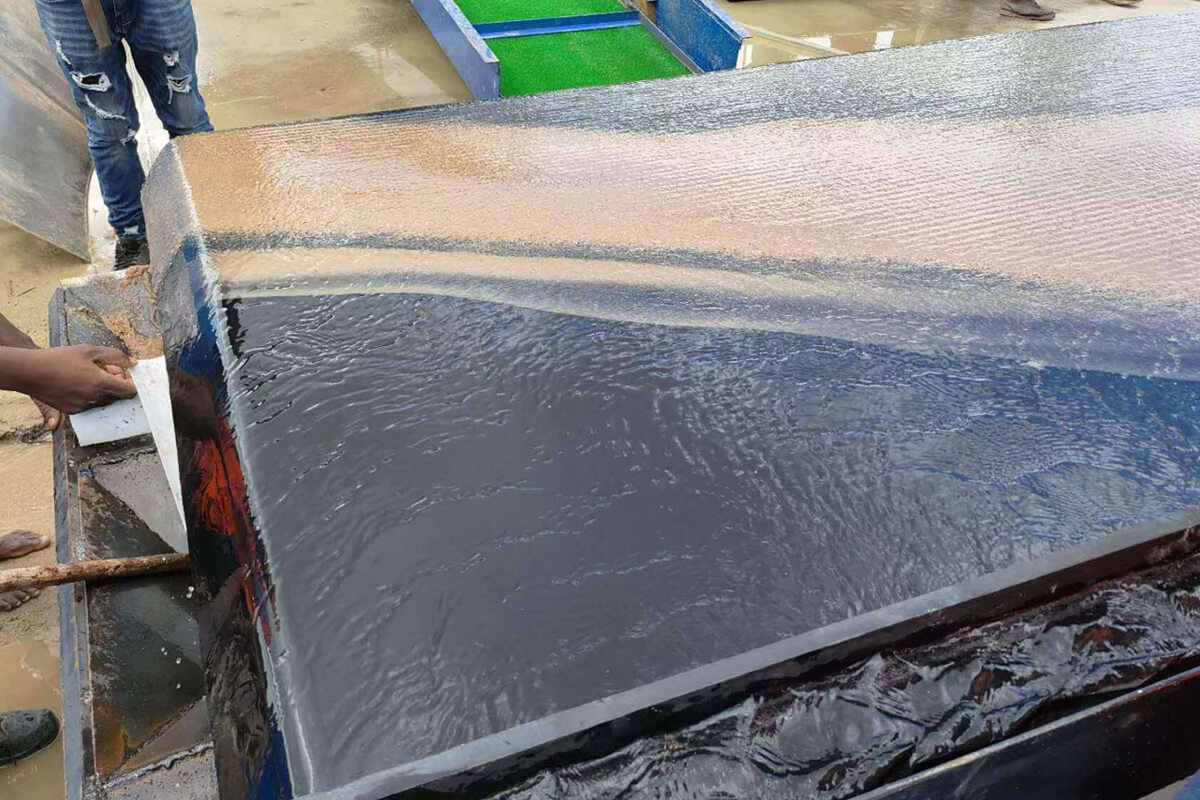Mining shaking tables are versatile and critical equipment in the mineral processing industry, used to separate valuable minerals from waste based on density. These stages combine lateral and longitudinal motion with water and other media to create a stratified bed of particles, allowing for efficient separation. What stands out about the shaker is its ability to handle particles of various particle sizes, making it suitable for processing various ores such as gold, tungsten, tin, etc.
As the mining industry evolves, shakers may play a vital role in maximizing resource recovery and minimizing environmental impact. However, a combination of factors that play a key role in its operation affects the efficiency and effectiveness of a mining shaker.
Factors Affecting Mining Shaking Tables
Factor 1: Feed Rate
Generally speaking, feeding the table faster increases turbulence and agitation, resulting in better material separation. This is due to the higher kinetic energy generated when transporting materials quickly, allowing for more efficient sorting and layering. However, feeding the shaker too quickly can cause problems such as overflow and loss of fine particles. Optimal feed rates ensure proper stratification of particles, allowing heavier particles to settle faster while lighter particles are washed away. By understanding and controlling this variable, engineers can improve recovery rates and increase overall productivity through a more efficient mineral separation process.
Factor 2: Amplitude and Frequency
Higher frequencies produce finer particle separation, making them ideal for processing fine-grained materials. Additionally, changing the frequency allows for greater control over the stratification and movement of particles on mining shaking tables, allowing for more precise sorting and increased mineral yields. By strategically adjusting these parameters, miners can achieve higher throughput, better resource utilization, and improved economics. This means that higher amplitudes may increase productivity and improve the recovery of valuable minerals.
Factor 3: Water Flow
The effect of water flow on mining shake tables is a crucial but often overlooked aspect of the operation. When the water flow rate is too high, it results in inefficient mineral separation, causing the minerals to be carried away by the excess water instead of collecting on the table. Conversely, more water flow can lead to better mineral separation and efficiency. Uncontrolled or inconsistent water flow can cause excessive vibration and hinder the table's ability to separate valuable minerals and waste materials effectively. Therefore, maintaining optimal and consistent water flow is critical to maximizing the productivity and efficiency of shake tables in mining operations.
Factor 4: Table Size and Shape
The size and shape of a mining shaker affect its ability to separate different types of ore effectively. Larger workbenches provide more surface area for material processing but require more energy and water consumption. The larger the table size, the greater the processing capacity and more ore material can be processed, thereby increasing the productivity and throughput of the mining operation. For example, a more extended table may exhibit higher vibration amplitudes, enhancing particle delamination and separation. Conversely, a wider table provides more lateral support for heavier loads, minimizing unnecessary deflection or deformation during operation.
Additionally, changes in table design, such as circular shakers, tend to produce more uniform radial flow, thereby enhancing the separation process of finer particles. On the other hand, a rectangular or trapezoidal table may be more efficient in conveying heavier particles quickly to a centralized outlet. Carefully consider the optimal shaker size and shape based on specific ore characteristics and processing requirements.

Factor 5: Maintenance and Operating Procedures
Regular maintenance and proper operating procedures can extend the life of your shaker, minimize downtime and optimize performance. Ensuring that all components are correctly lubricated, inspected for wear, and calibrated according to manufacturer specifications is critical to maintaining the operational integrity of your shaker.
The shape and size of the processed particles also play an important role in mining shaking table performance. Irregularly shaped or overly large particles may not deposit properly on the work surface, reducing separation efficiency. Understanding how particle properties interact with vibrational motion is critical to achieving desired results in materials processing operations. JXSC supports the development of more efficient mining processes and equipment while minimizing environmental impact.
